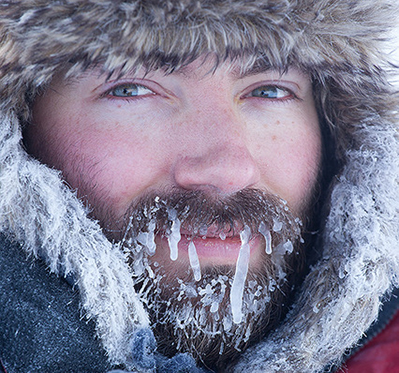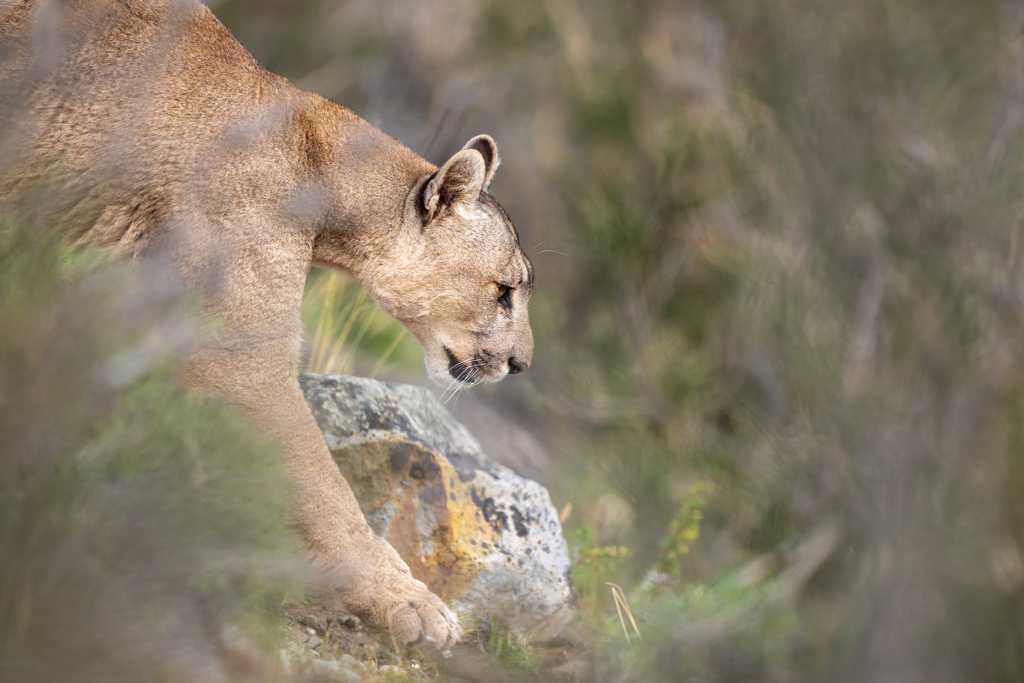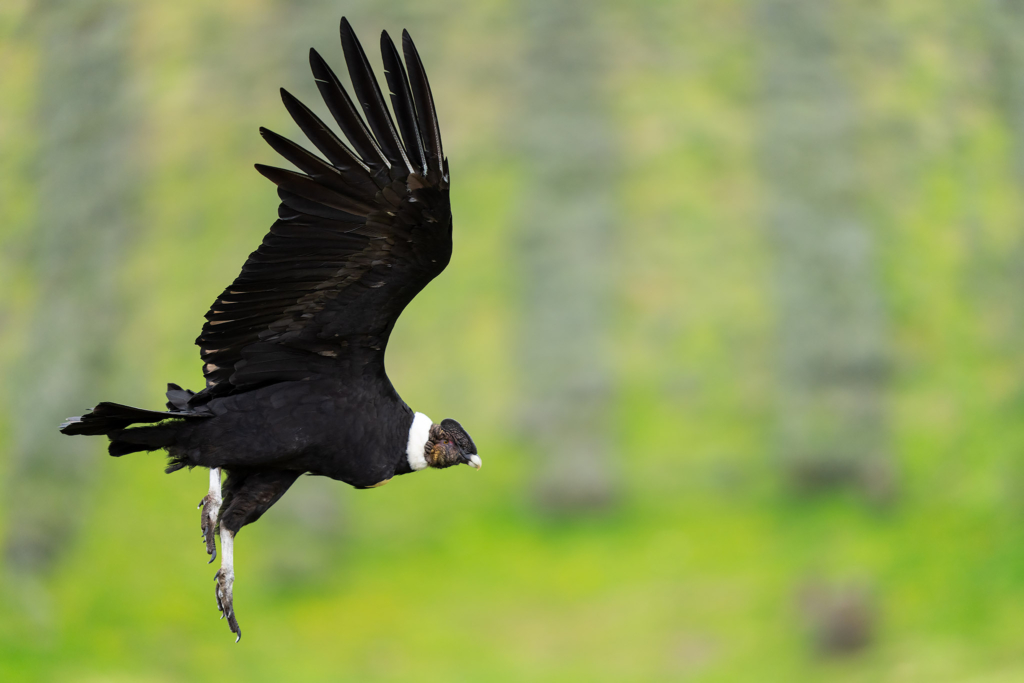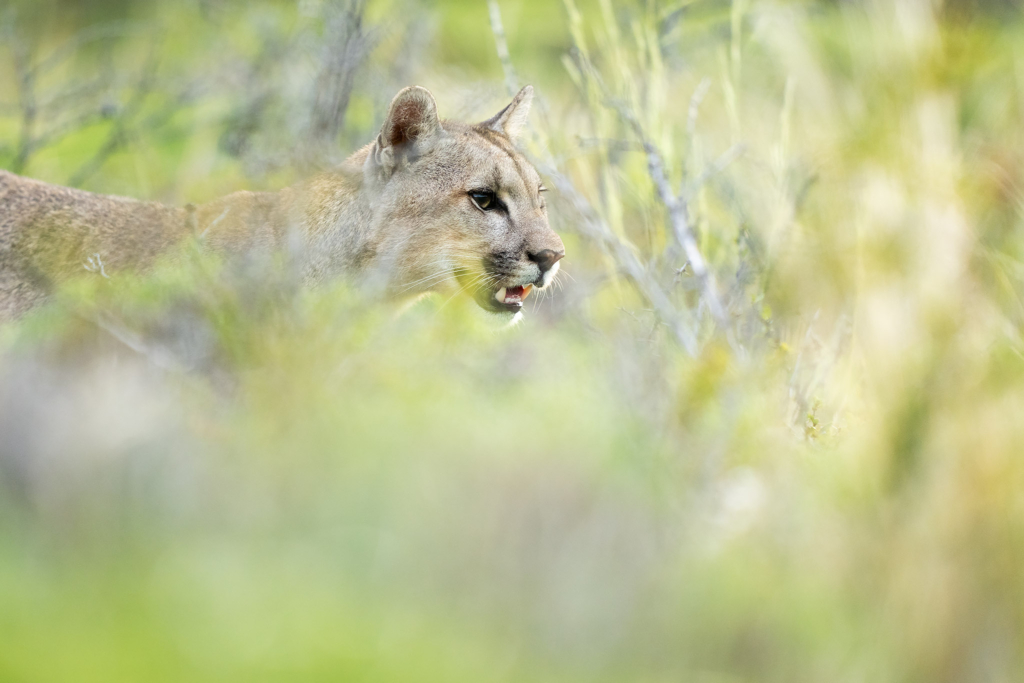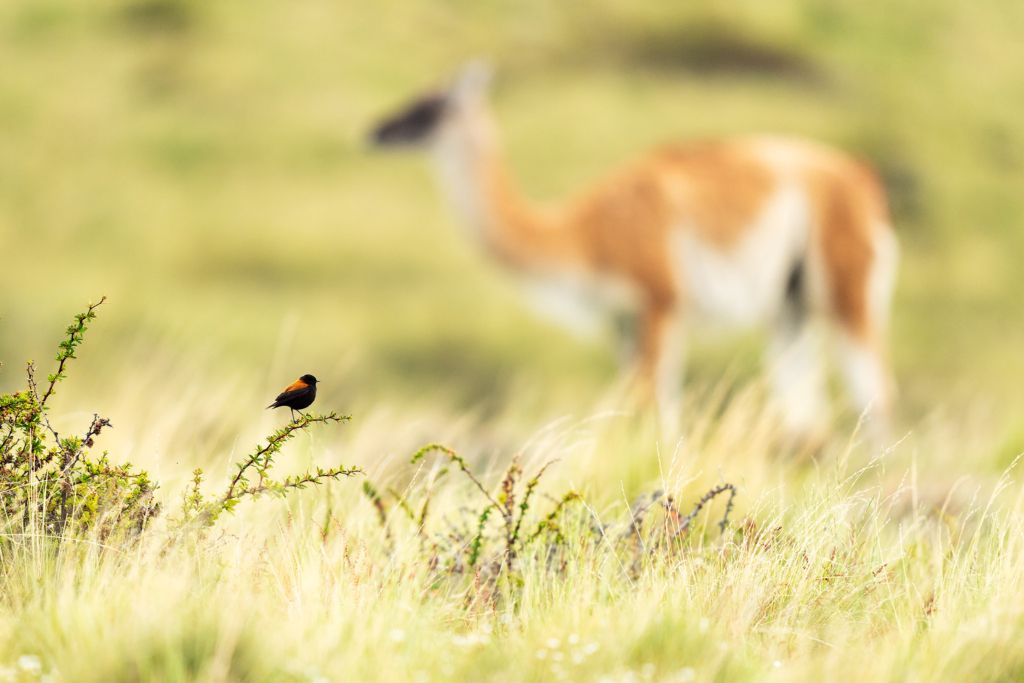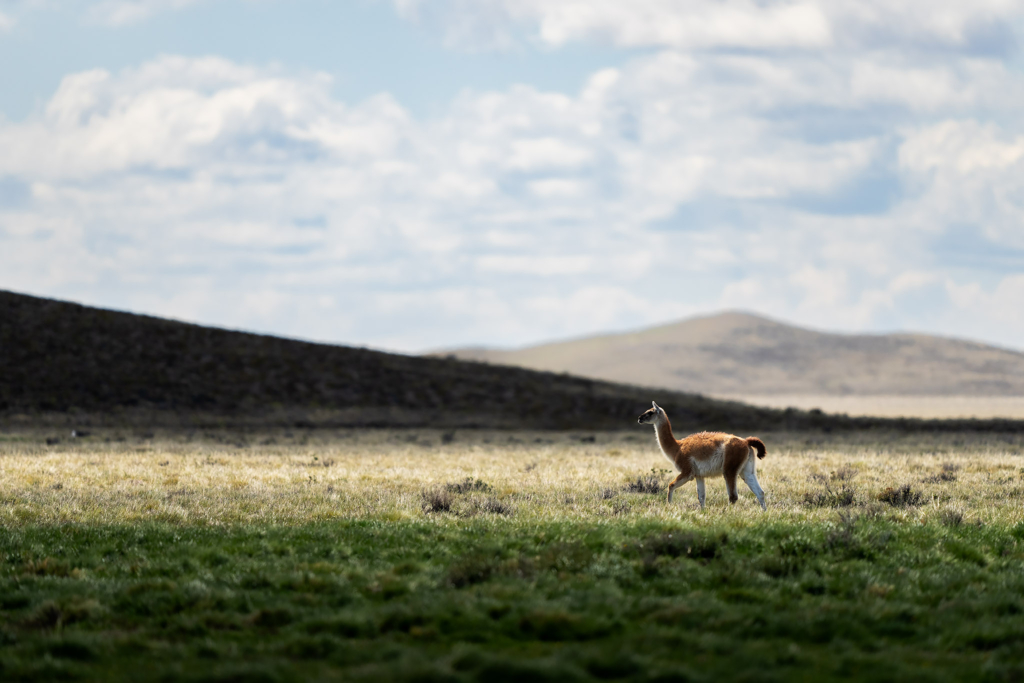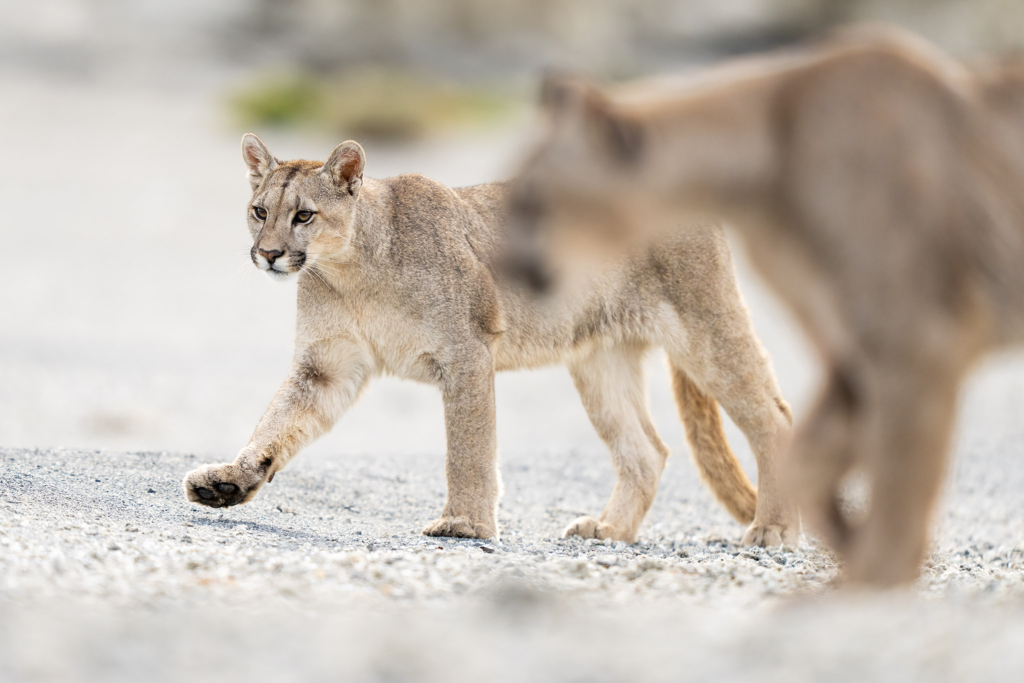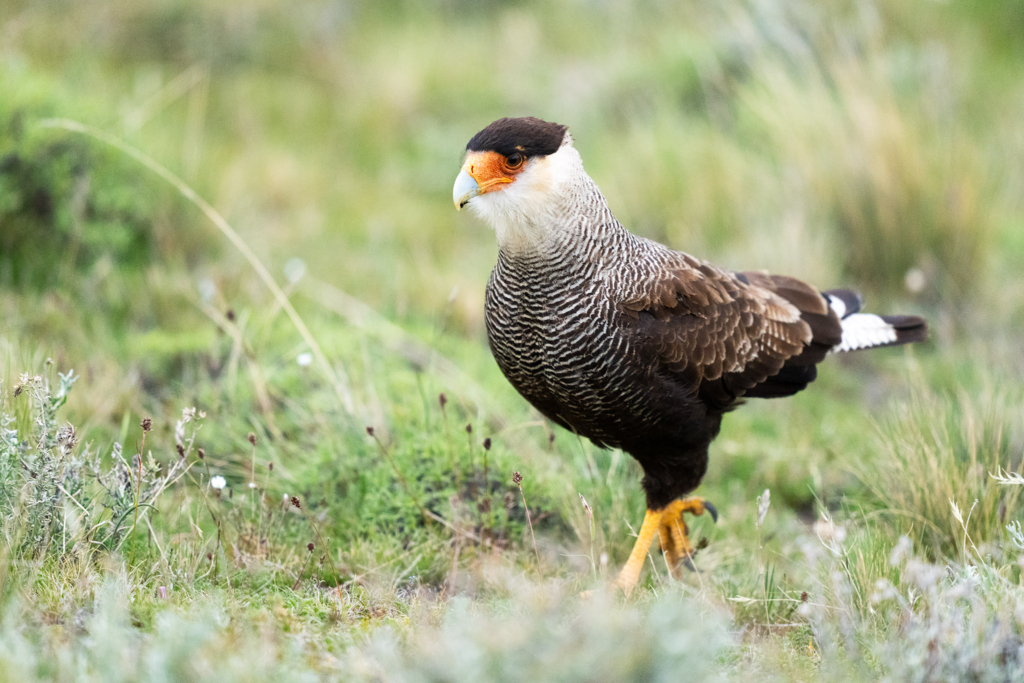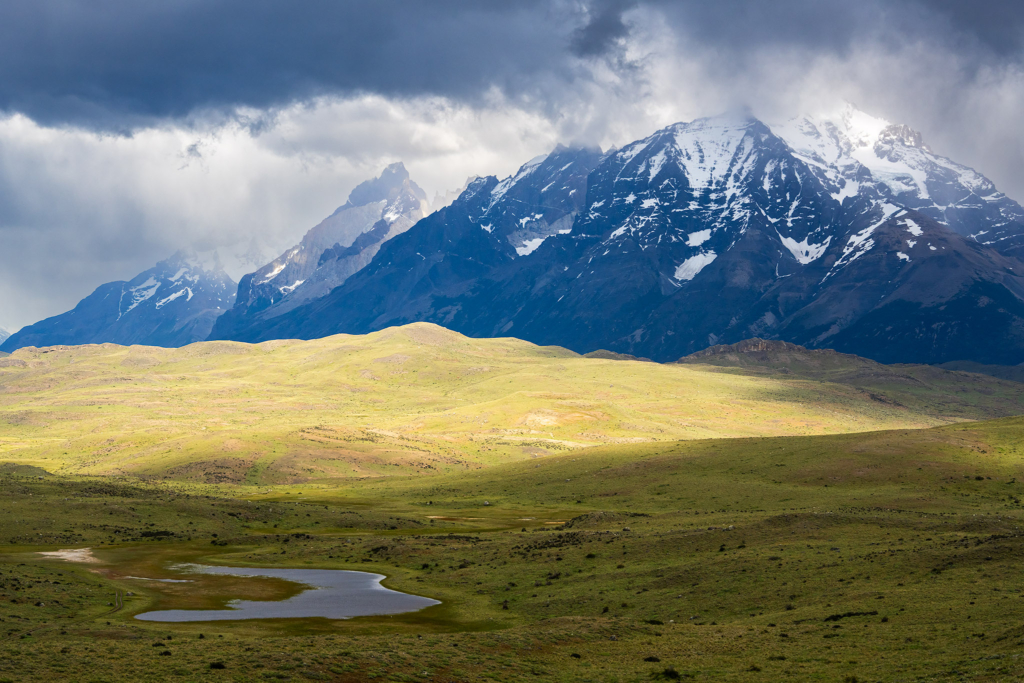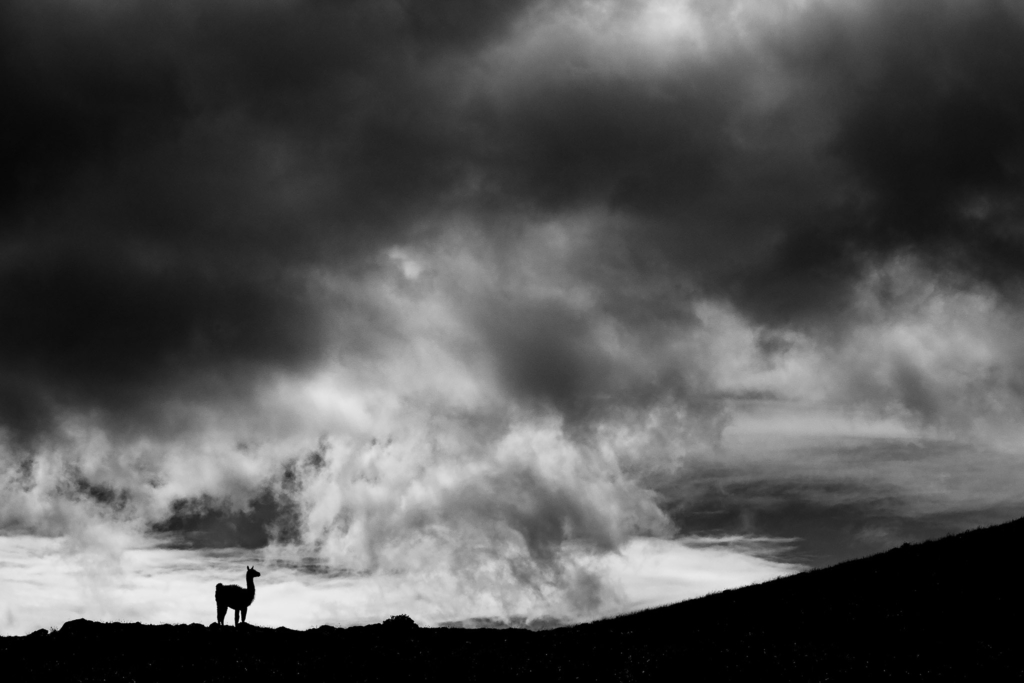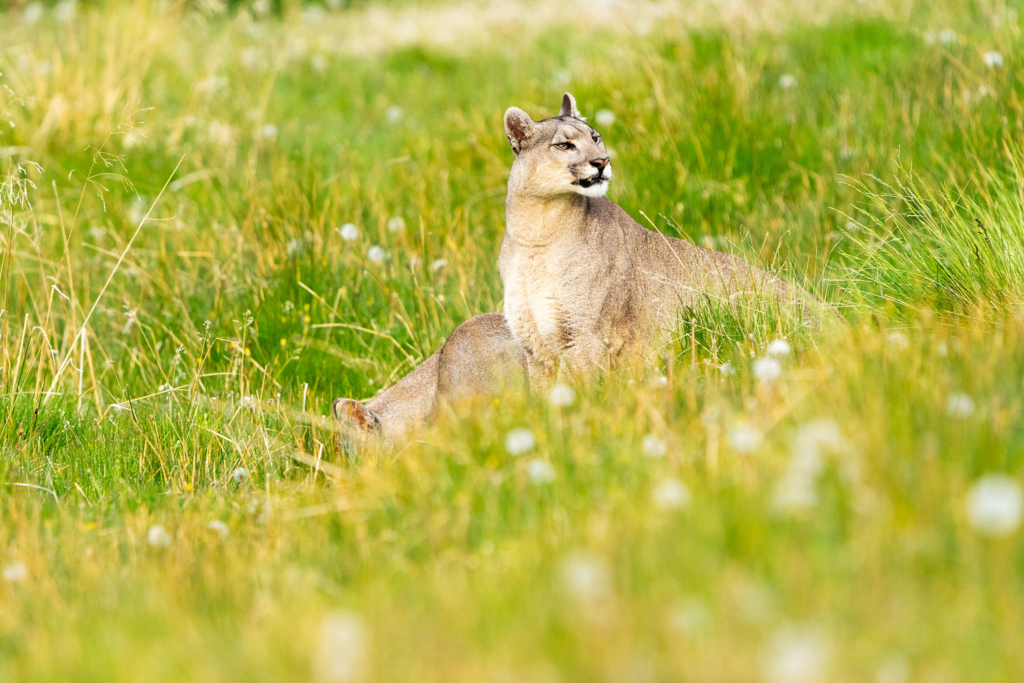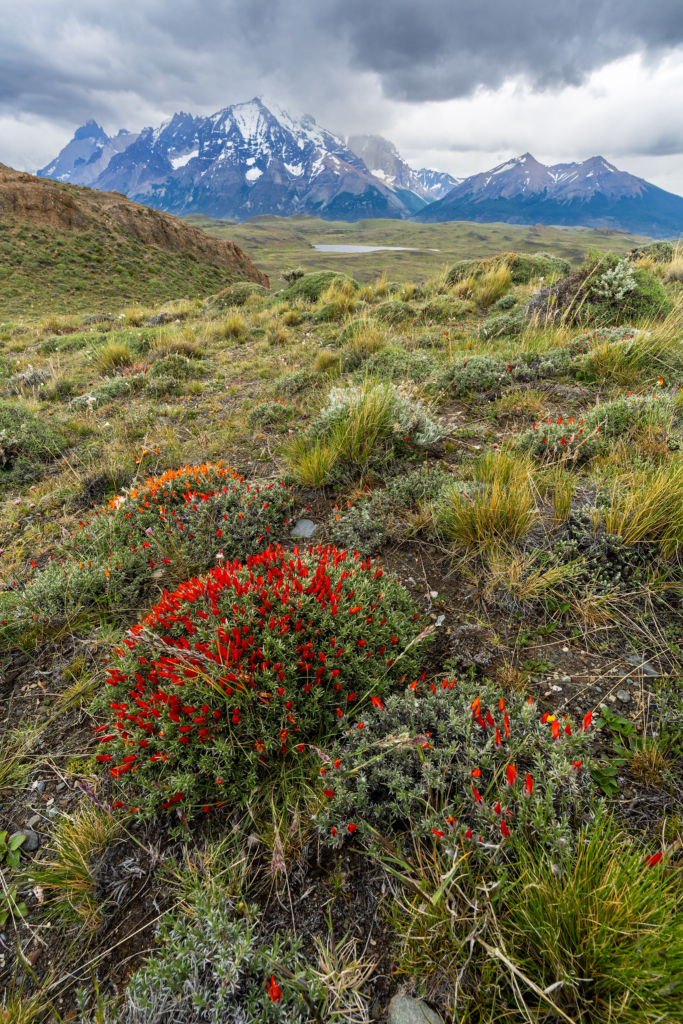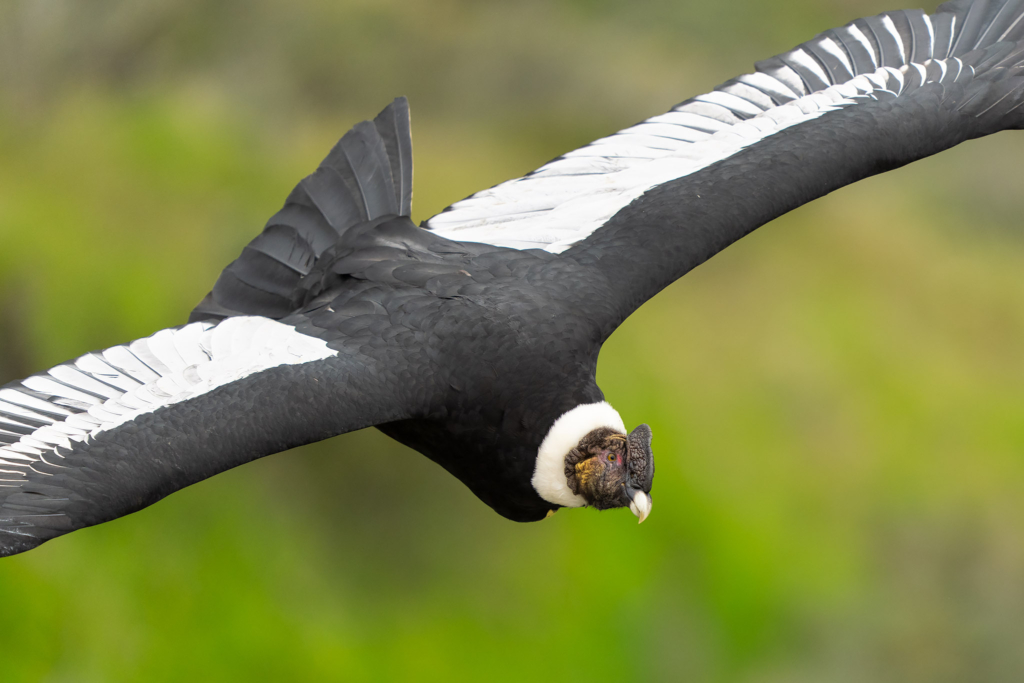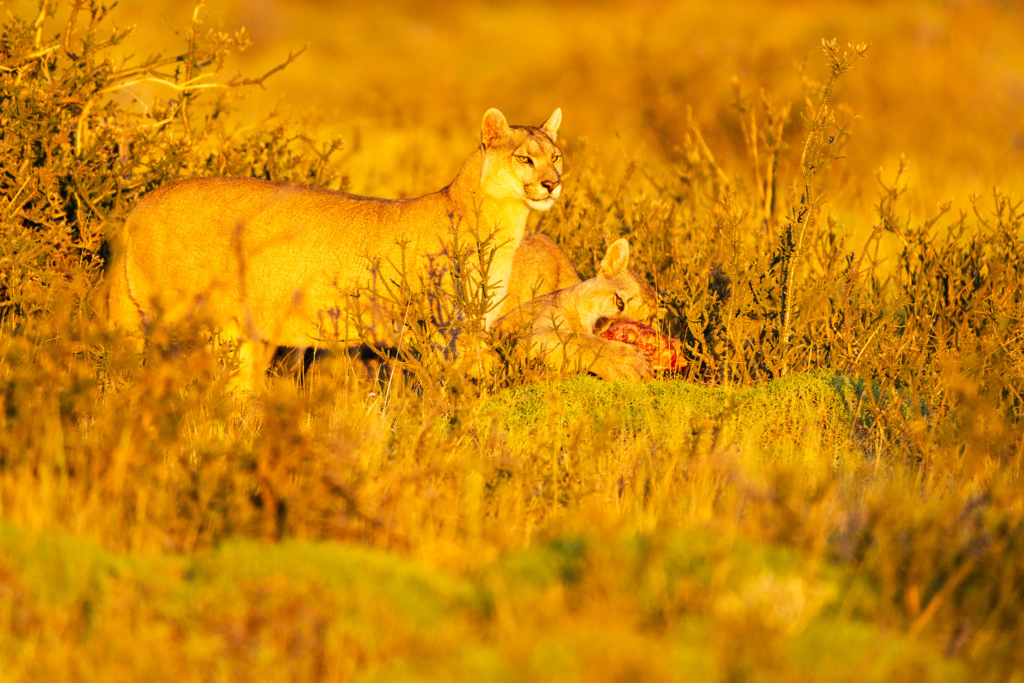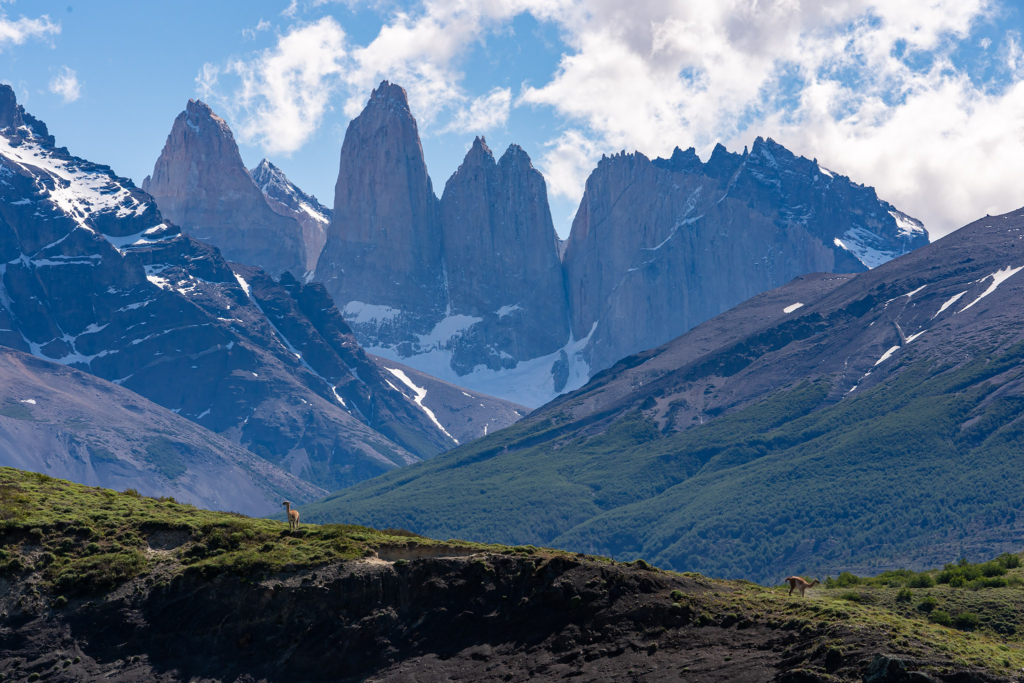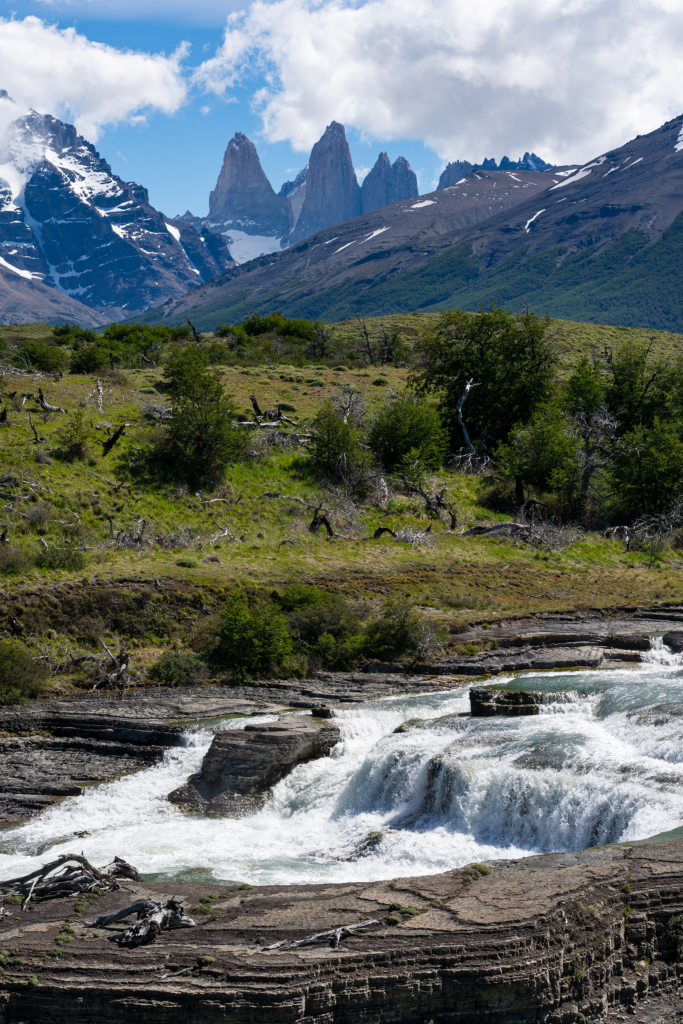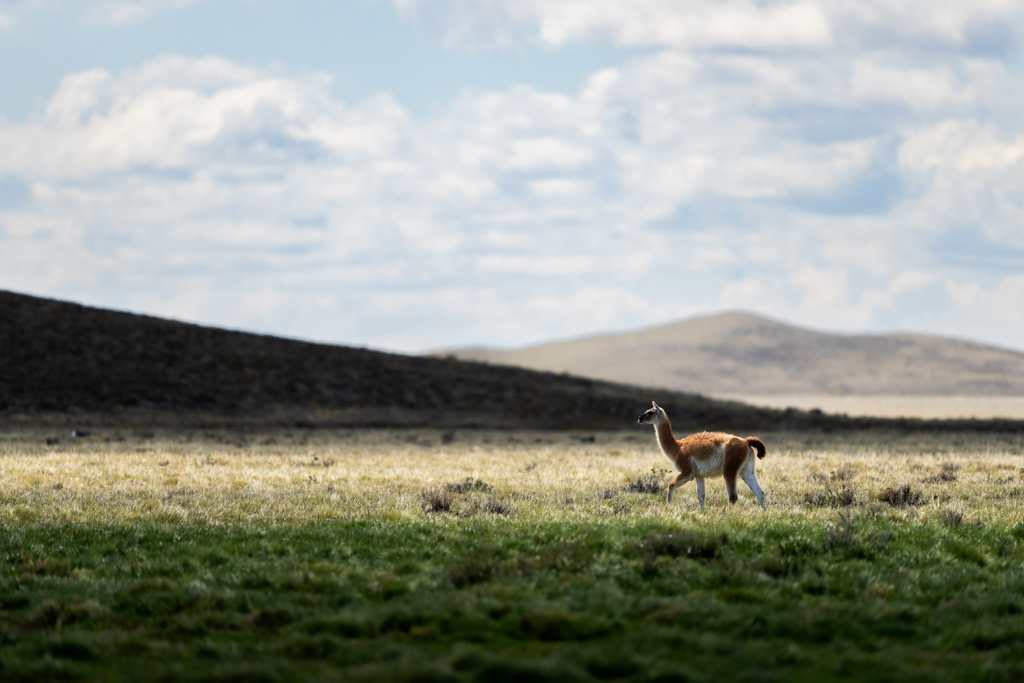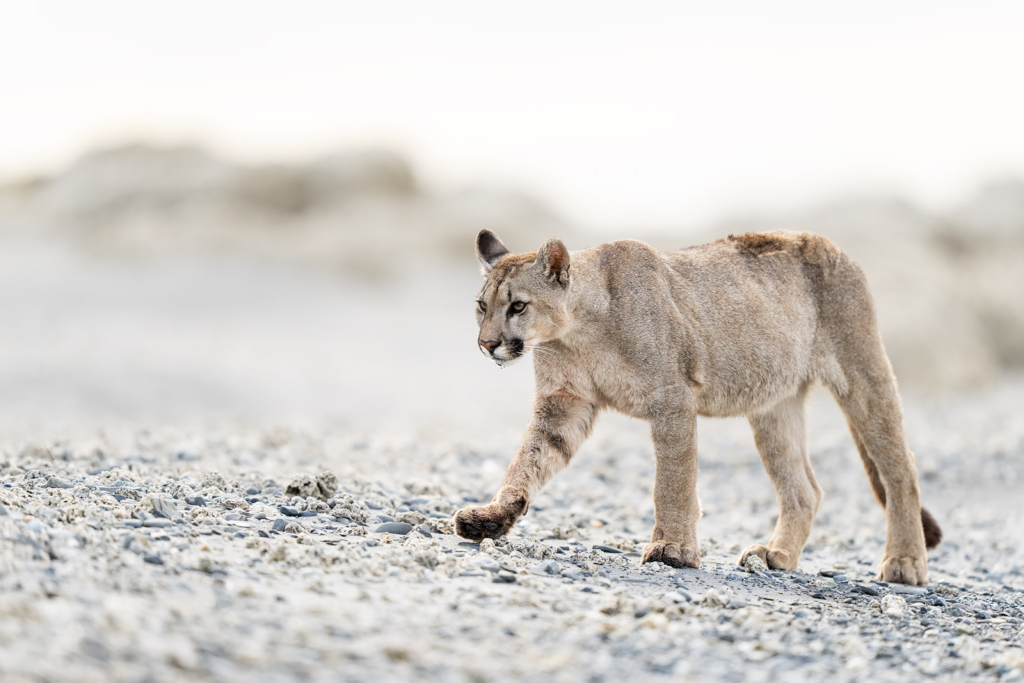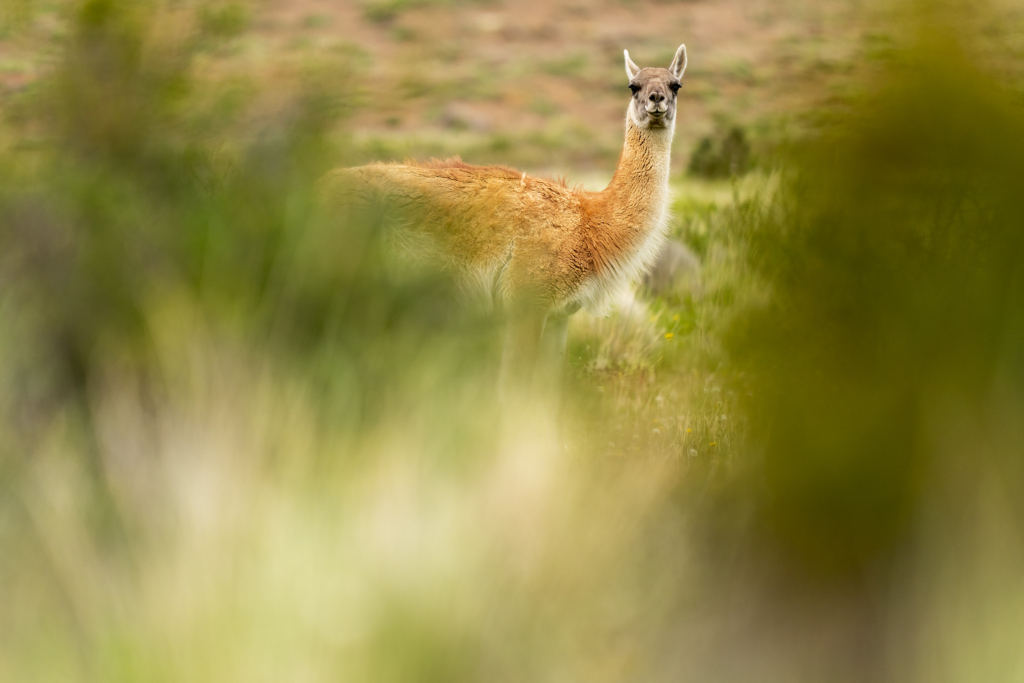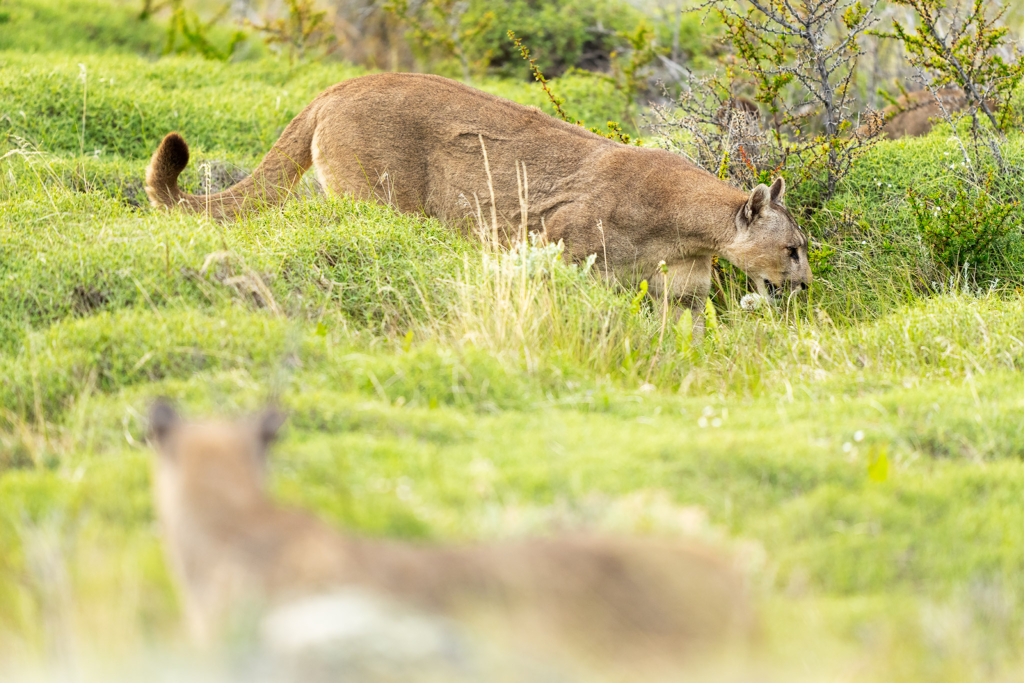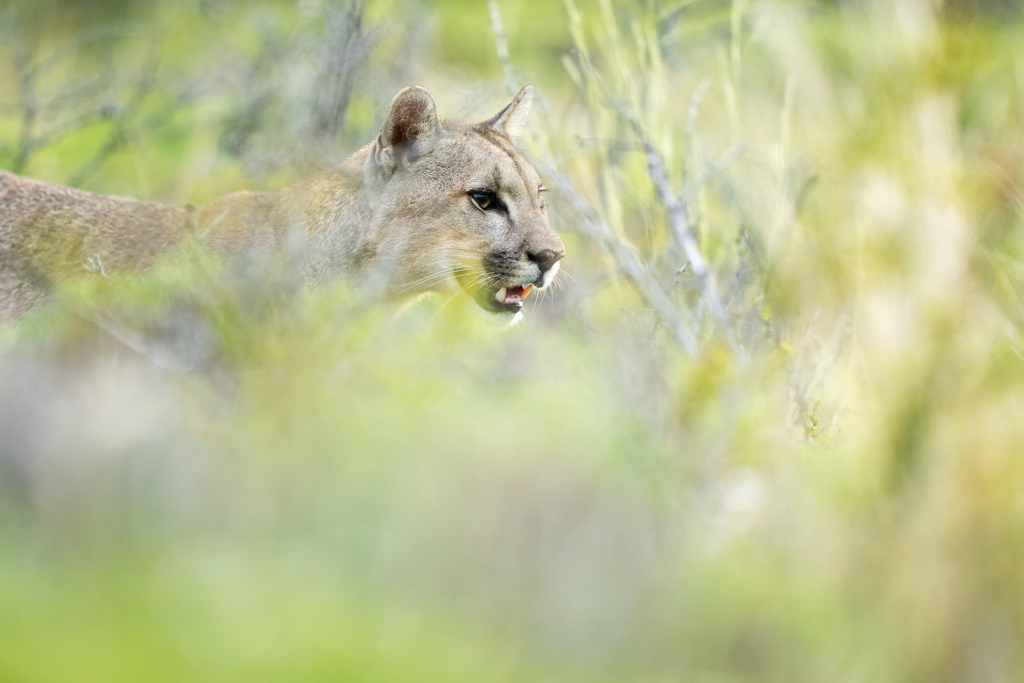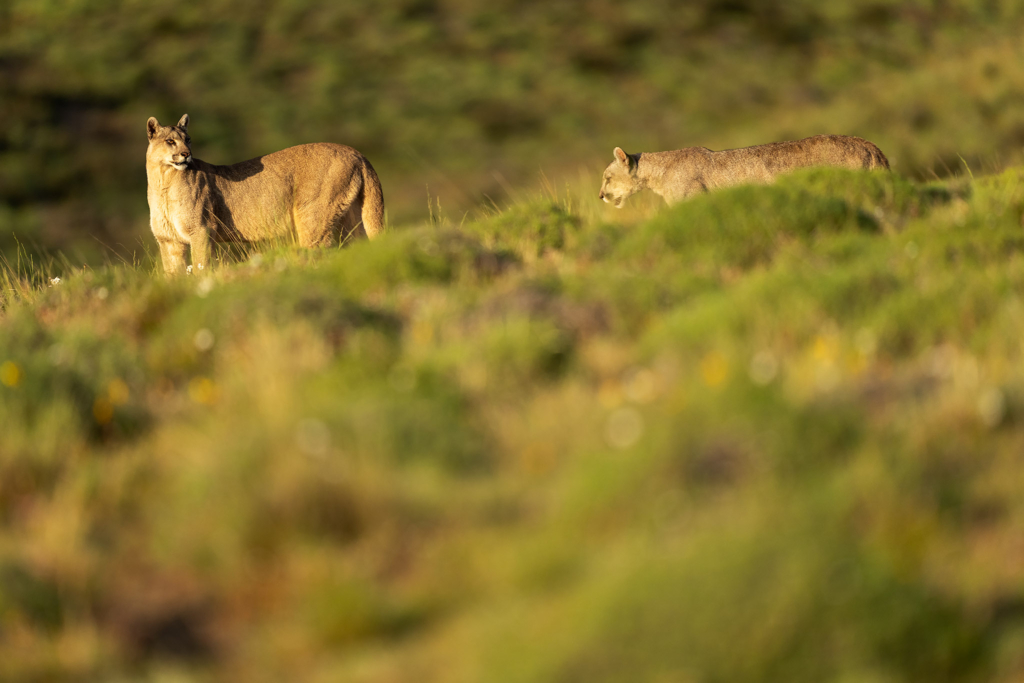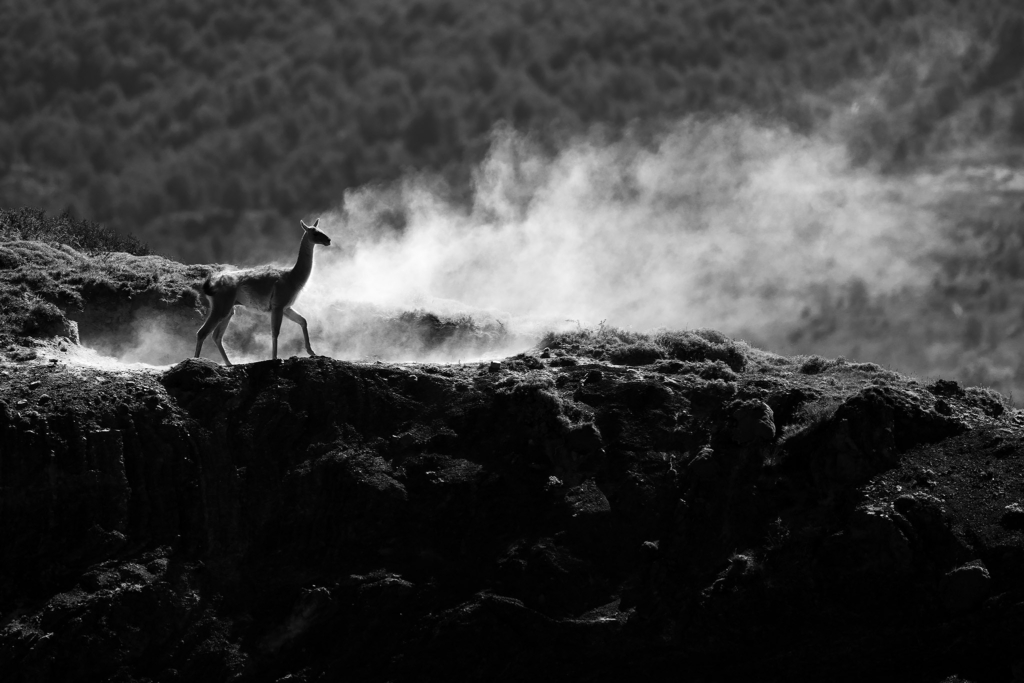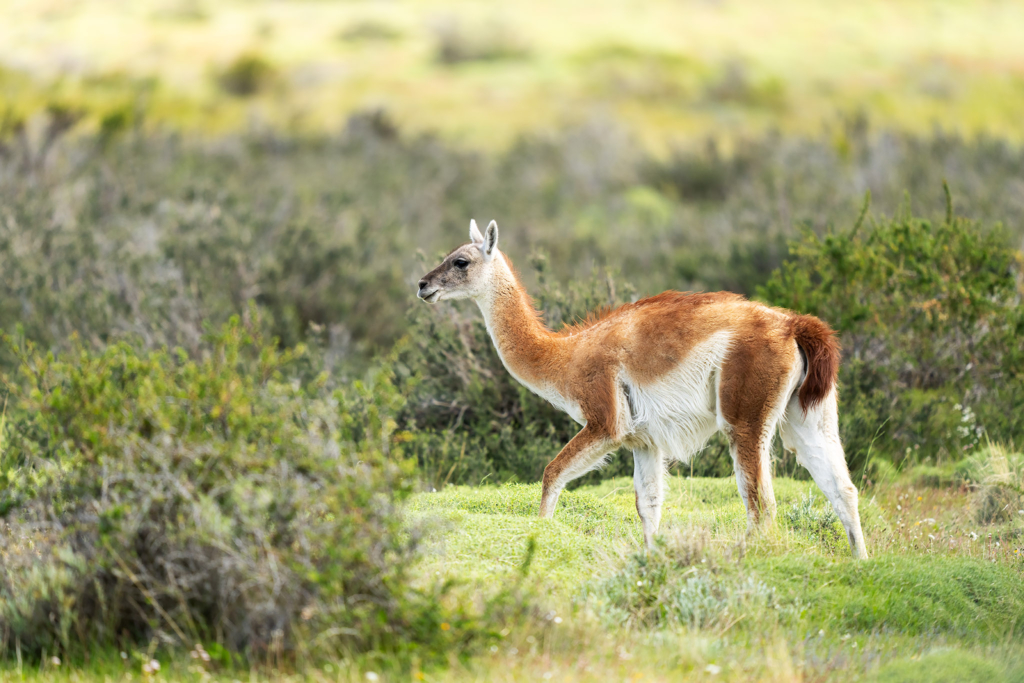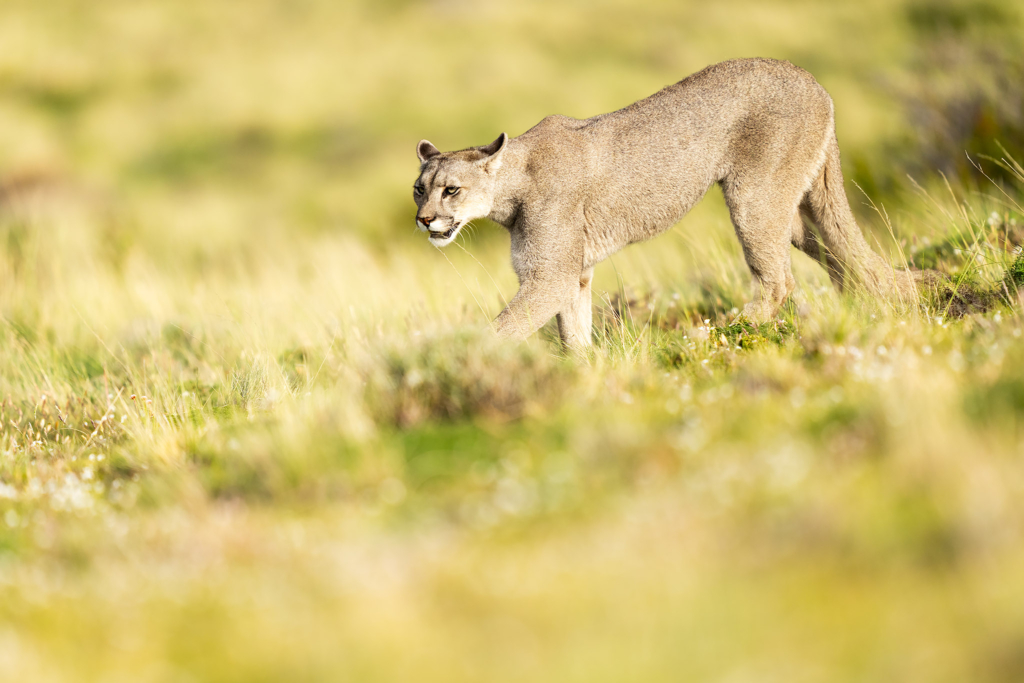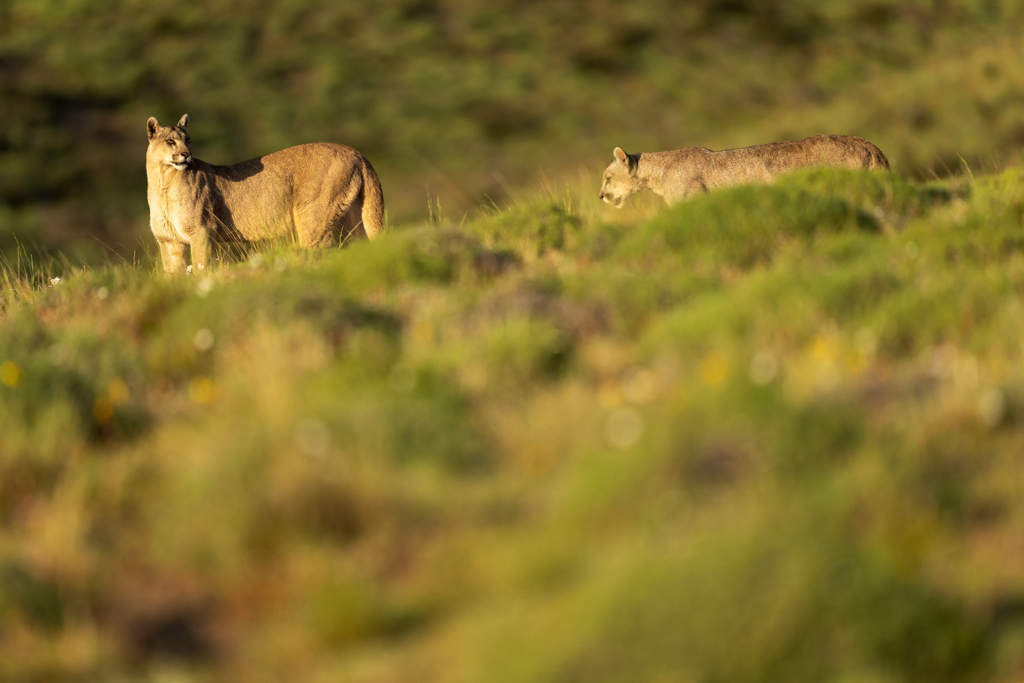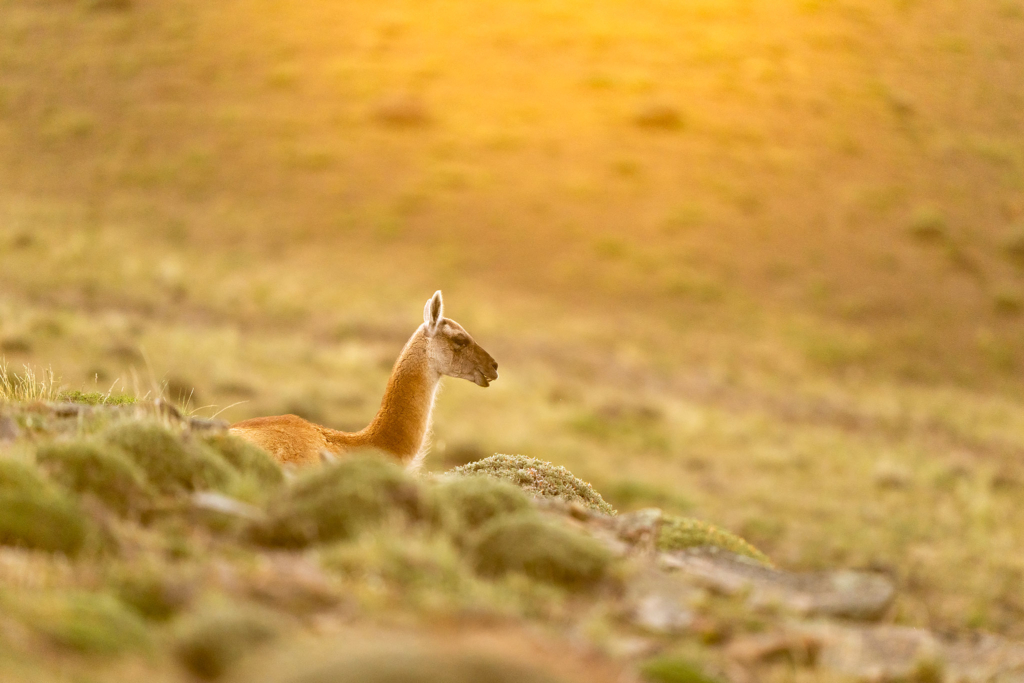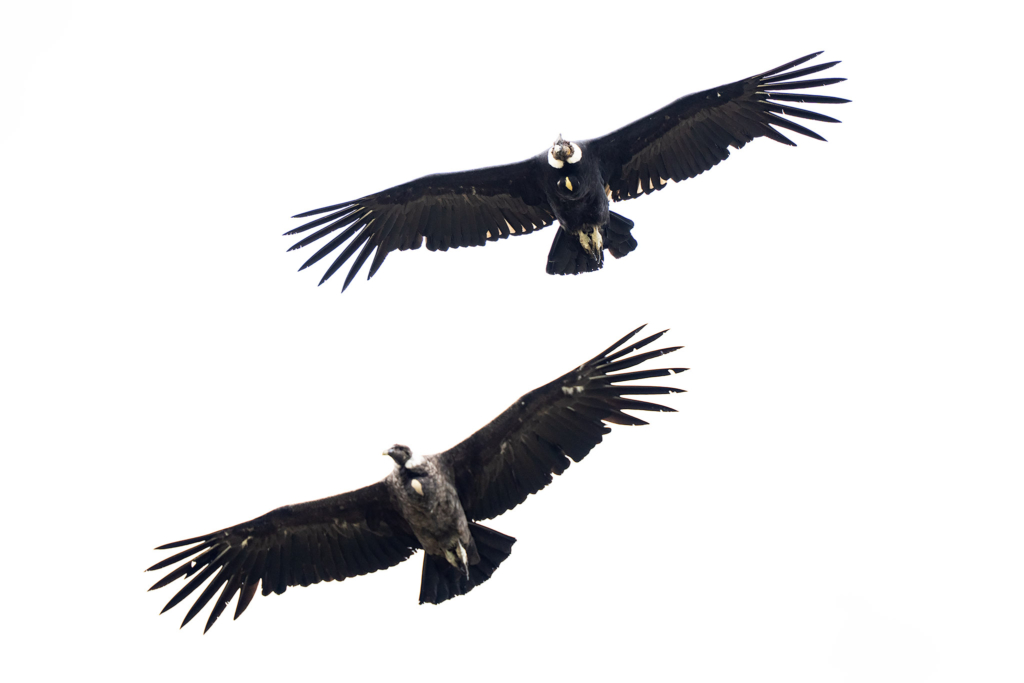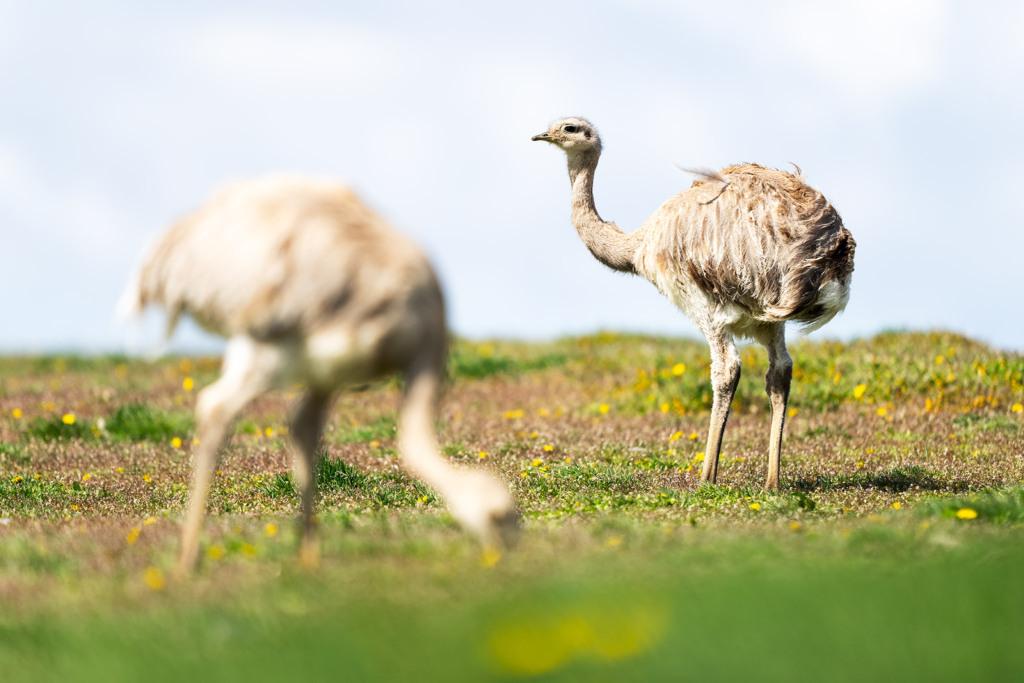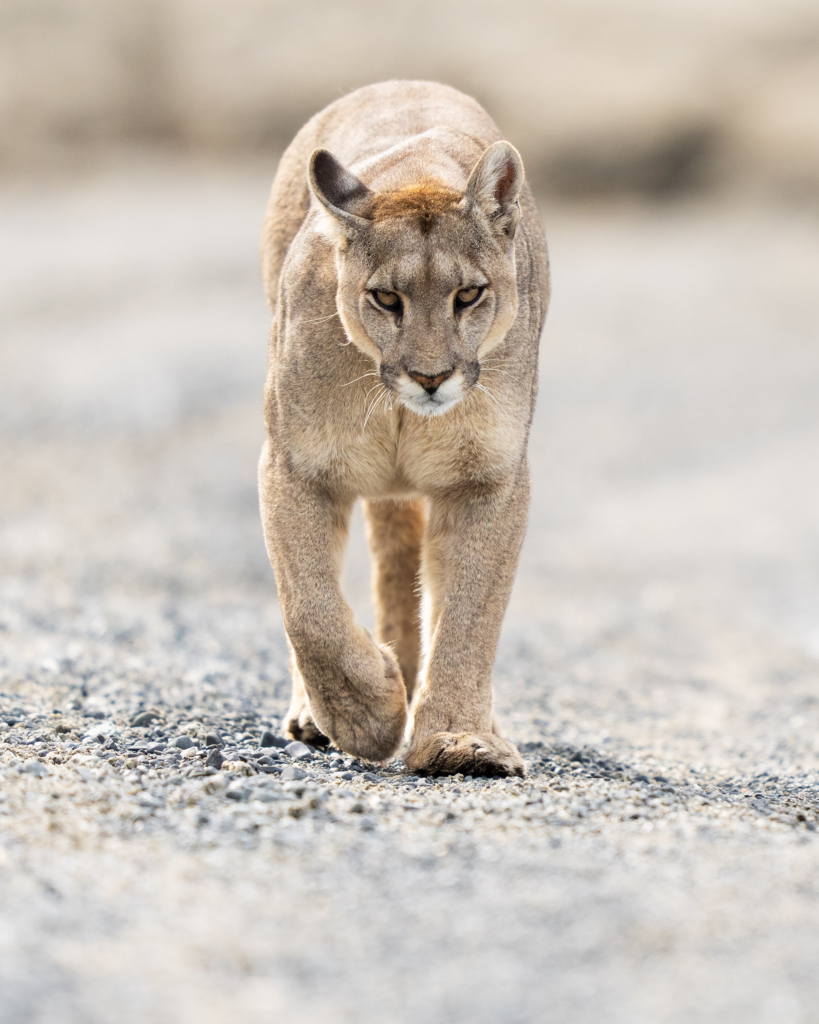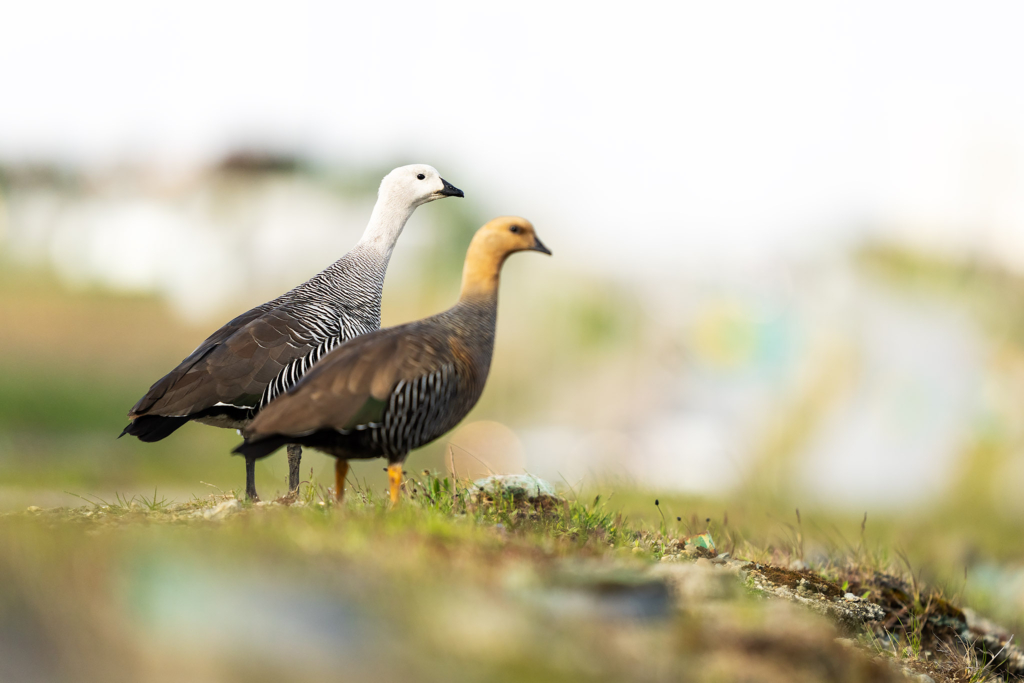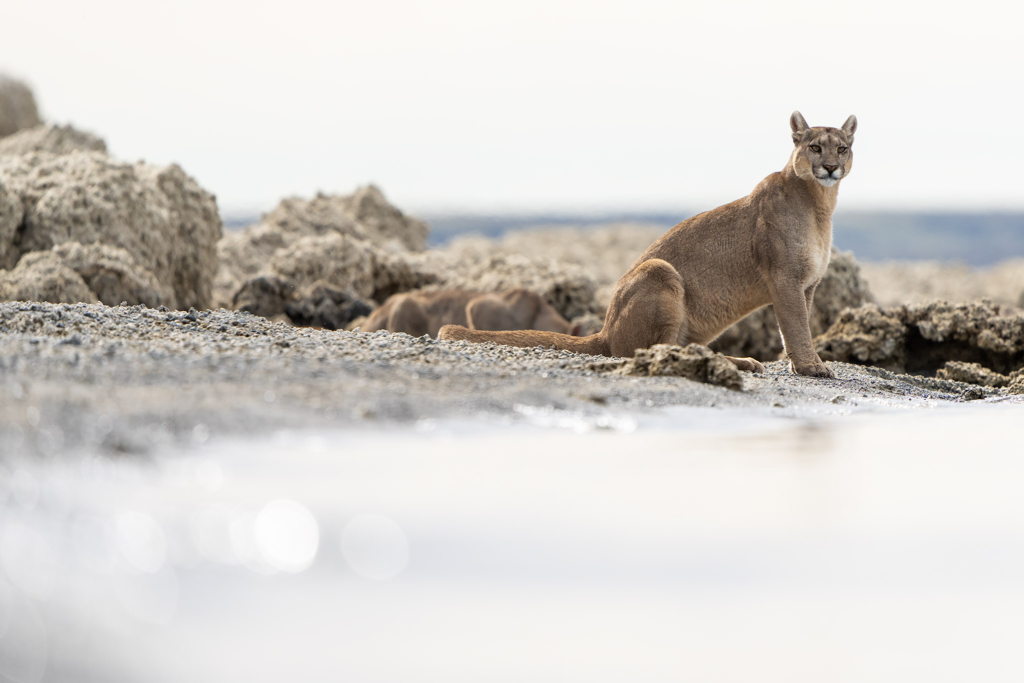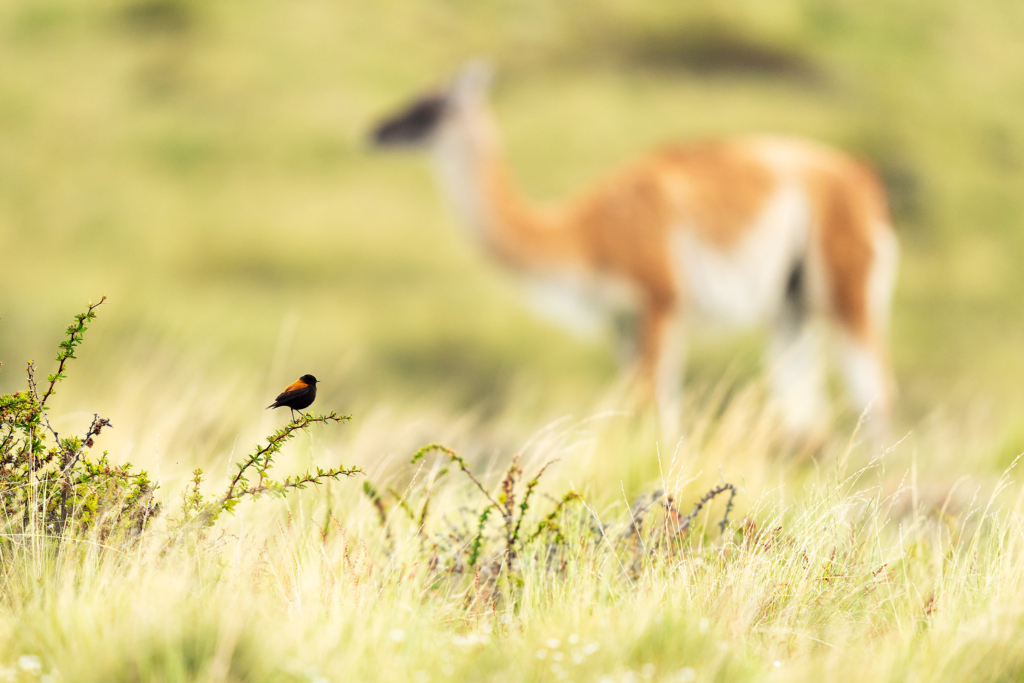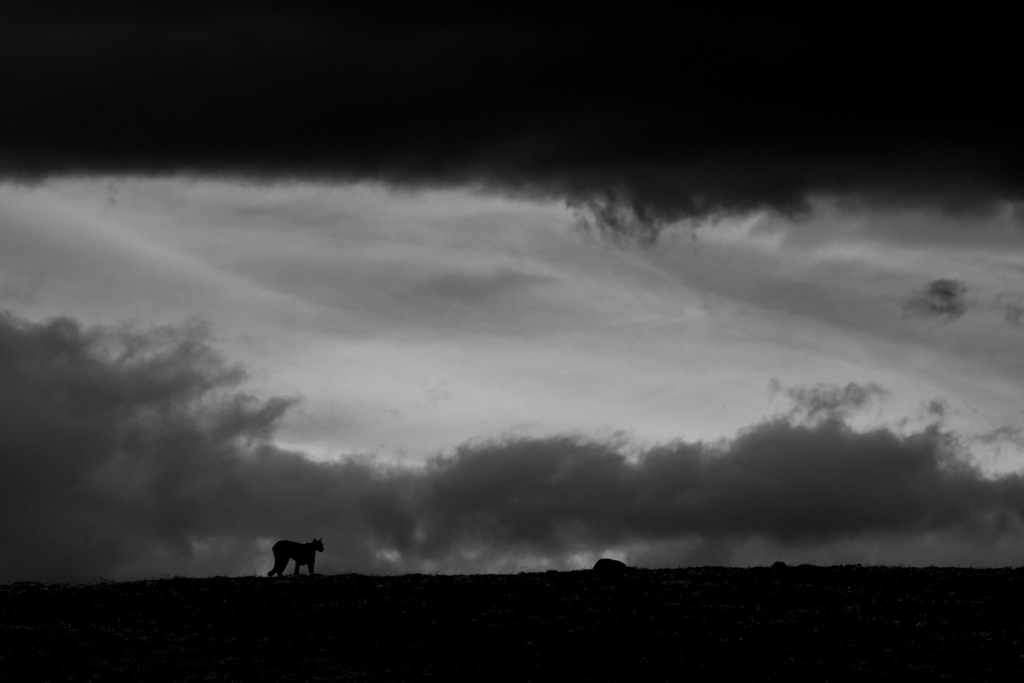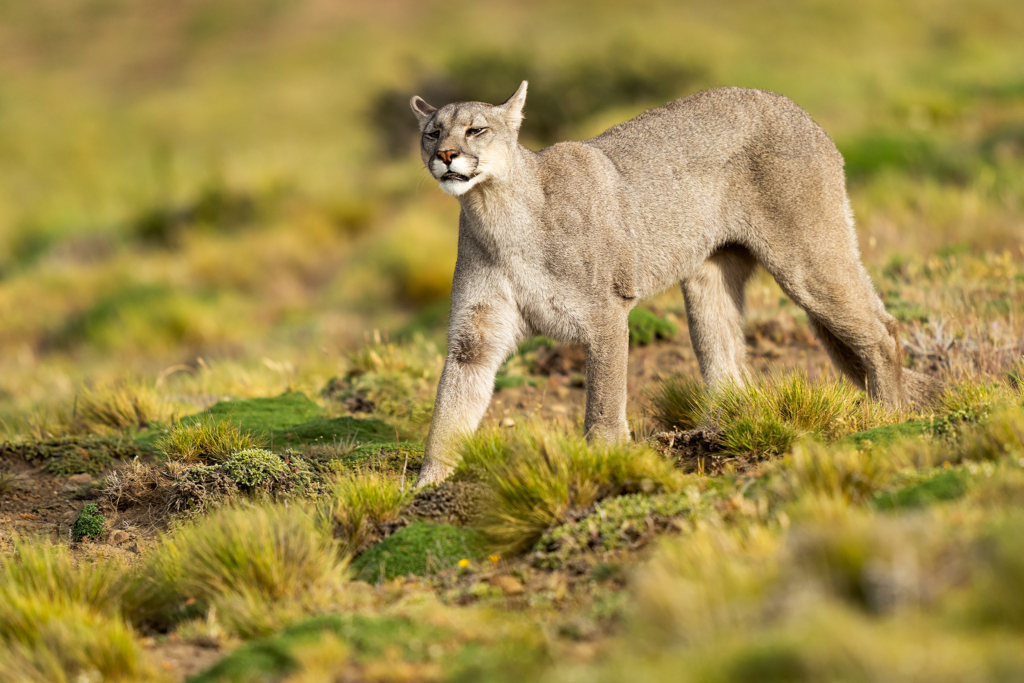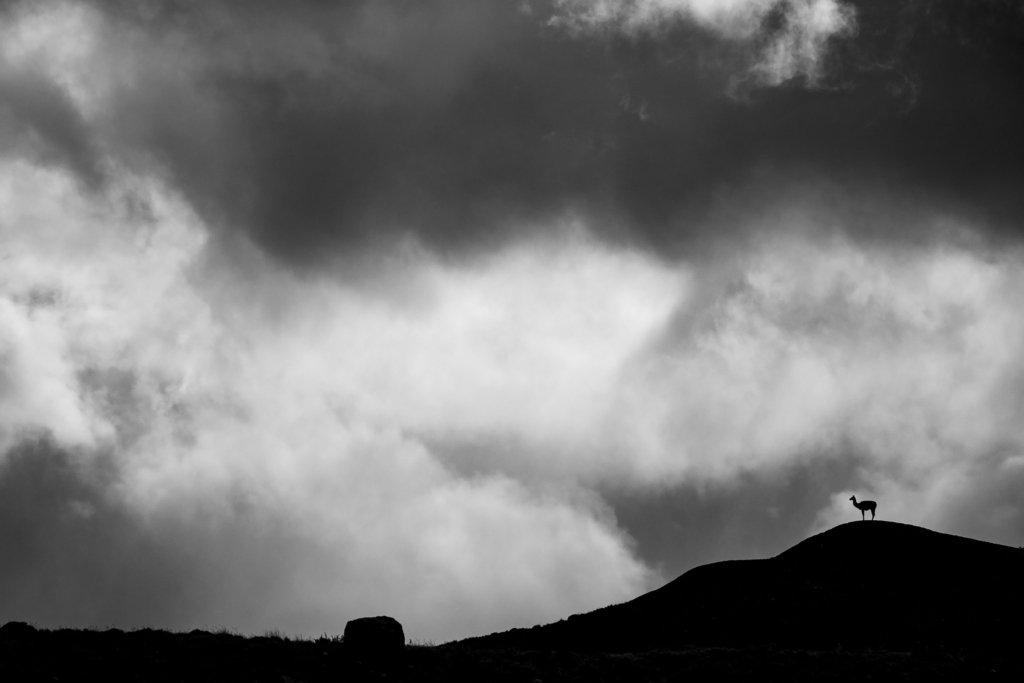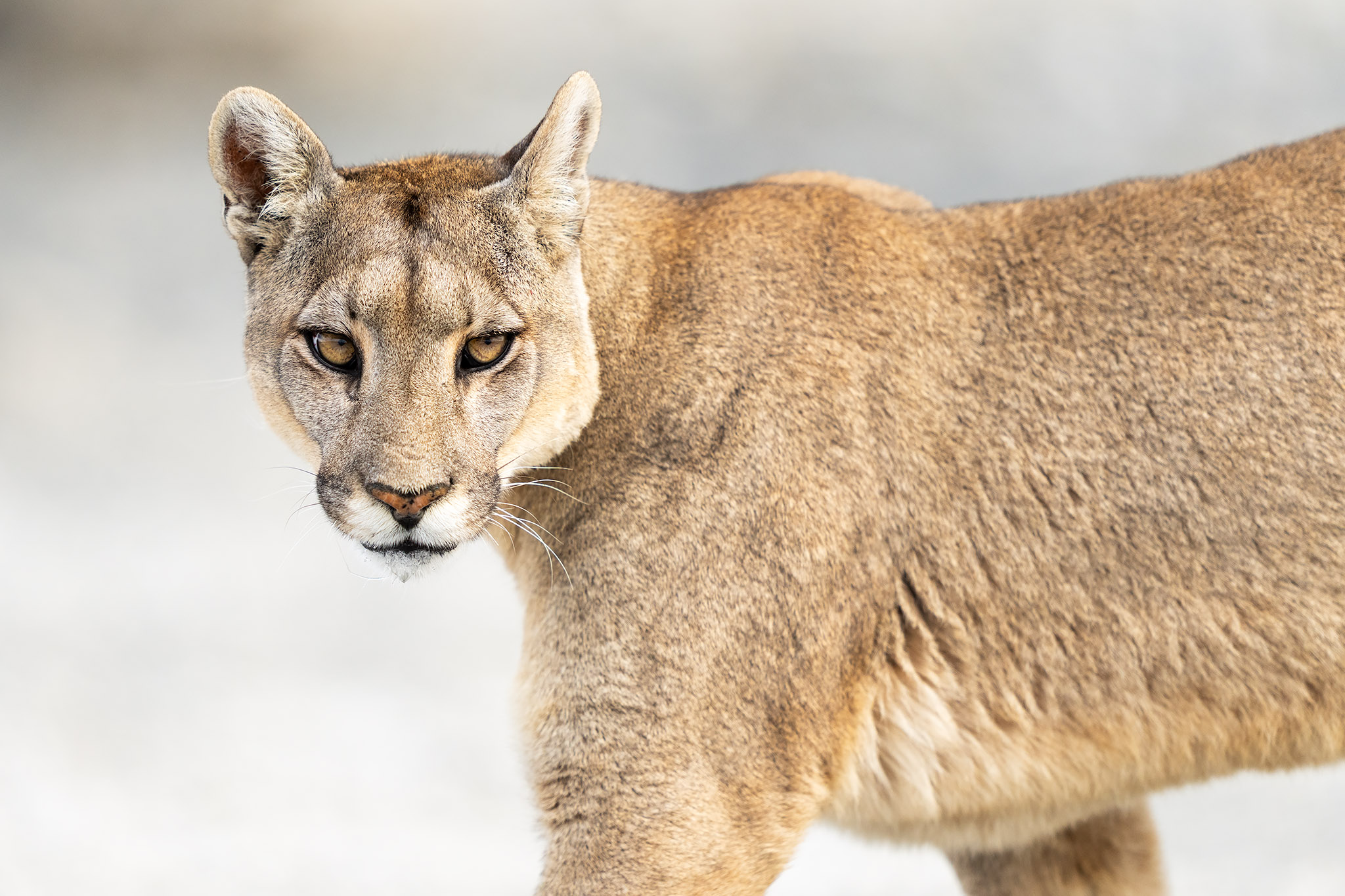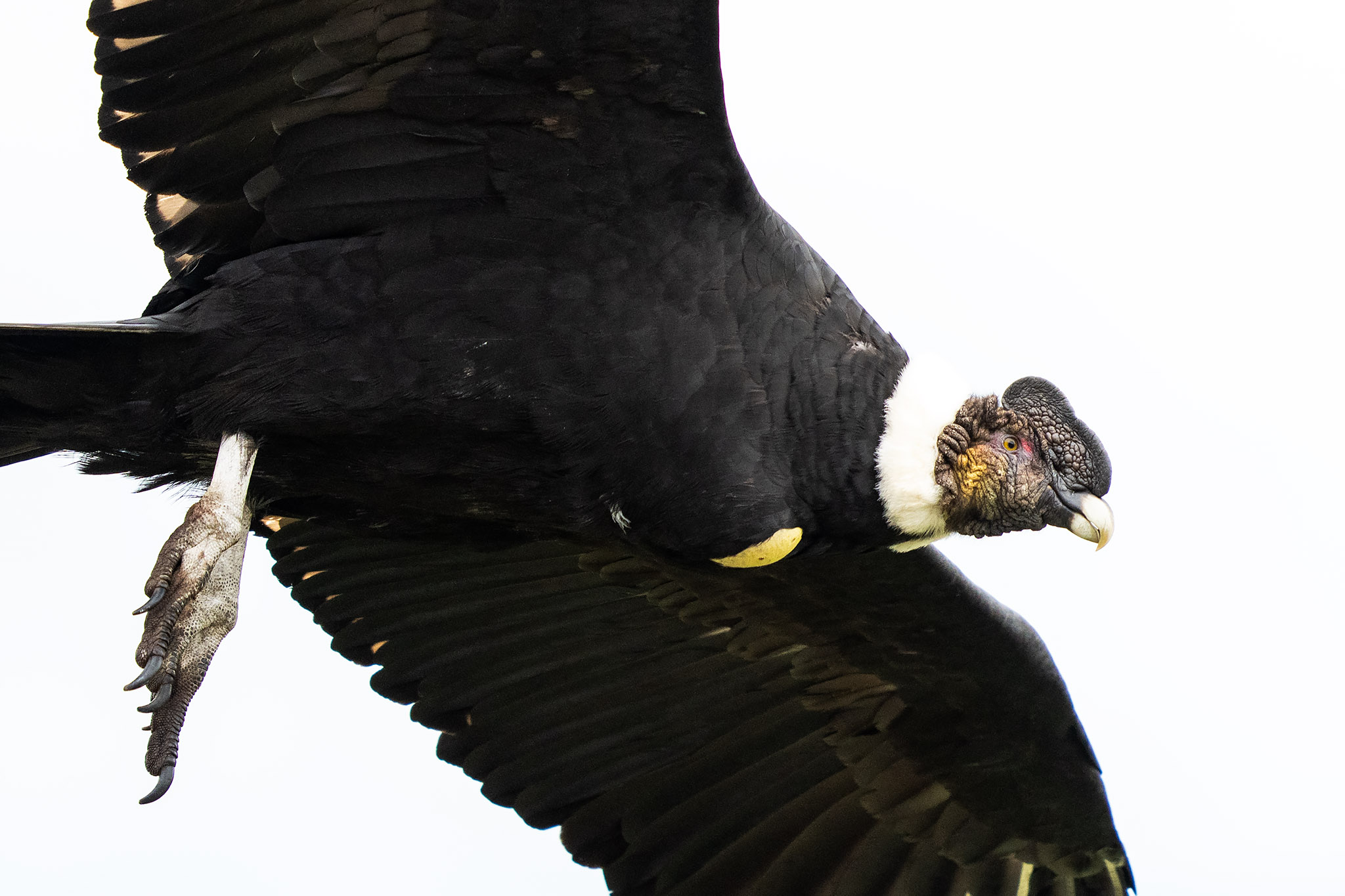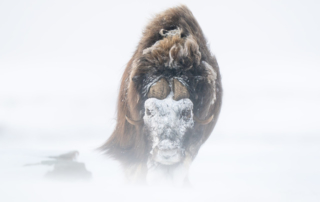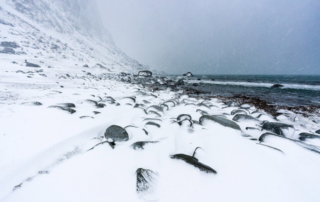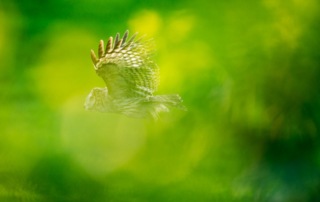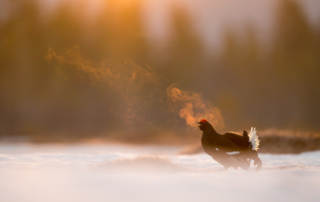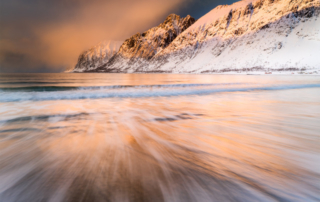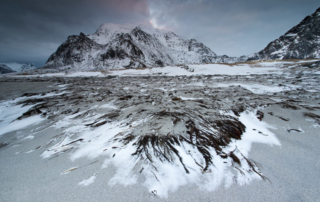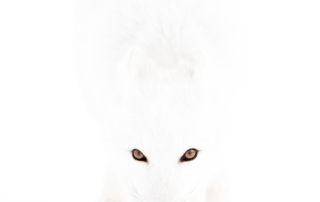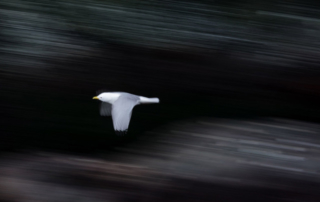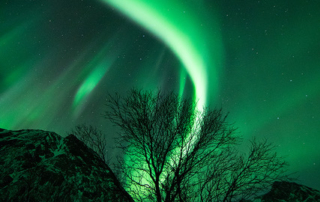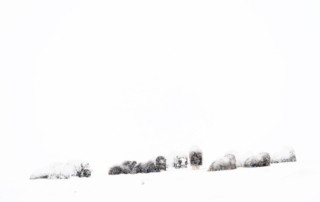SOME HIGHLIGHTS
- A photo tour planned to maximize the chances of photographing wild Pumas close and personal for 5 full days
- We are looking for Pumas on a private property where our guides are one of the few companies allowed to guide there. This property is famous for their pumas and is where most of the puma documentaries have been filmed for the past decades
- We look for Pumas from morning to evening with a short break in the middle of the day
- We have a Puma tracker who goes out early in the morning to look for the cats for us
- We have access to 4×4 vehicles which facilitate and give us better opportunities to photograph. Also with a thick layer of snow we will be able to track for pumas with these vehicles
- Full day of condor photography
- Other interesting animals like guanaco, foxes and birds that lives in Patagonia
- Dramatic landscape around us all the time
- In addition to the puma tracker, we have an experienced and knowledgeable local guide
- Small group of like-minded people, maximum eight participants
Long before the sun has risen, our puma tracker heads out to begin searching for our big photo target of this trip, the pumas. We have the luxury of sleeping for another hour or so, but also head out into the Patagonian wilderness before sunrise. In 4×4 vehicles we enter the private property and make our way up the hills on the small roads, to search for pumas and other subjects to photograph. If there is too much snow on the roads, the guides put snow chains around the tires, which will allow us to enter the areas. As the puma tracker is out well before us, it won’t take long before our guide will get a call from the tracker with the location of the first puma. The puma can be right next to the “road” or it can be that we have to hike off trail to get to the sighting. In this private property we are allowed to track the pumas on foot and off trail. This gives us the ultimate freedom in how and from what distance we will photograph the pumas. The guide and tracker work closely together to get us in the best position with the best chances to have the pumas walking towards us. As long as the pumas are not disturbed by our presence, we can keep following the pumas through the terrain. Some pumas will allow us to stay with them for several hours, so bring plenty of memory cards and batteries when you leave the vehicle!
PUMAS AND TORRES DEL PAINE
This photo tour is mostly focused on photographing puma in the remote and stunning Patagonian wilderness in a large private property bordering Chile’s Torres del Paine National Park. The private property is not fenced and all wildlife we encounter is 100% wild. Many of the pumas wonder in and out of the property, but only within the boundaries of the property we are allowed to walk off trail. Our local guides have been conducting puma tours here for more than 20 years so they know the area inside and out. The area we are going to is the best place in the world to see this magnificent cat. From the private property we have some of the best views to Torres del Paine National Park, which often considered by visitors as one of the most beautiful and majestic wild places on the planet. In and around the national park it is not unusual to see relaxed and curious guanacos, foxes and other animals up close, but to see the lone hunter that lives in the vast and rugged hills, the mighty puma, is something else.
In order for us to have the best conditions to find pumas and be able to photograph them, we will look for this wonderful cat on a private ranch bordering the national park. How you are allowed to move in the national park is strongly restricted, but in the private lands around the park we have opportunities to move much more freely. The ranch we will be at is considered one of the best places, if not the best, to see puma. Our local guides are one of the few companies that have access to guide inside the ranch. The ranch is also heavily involved in the protection and conservation of pumas in Patagonia.
Pumas are normally most active at night, early in the morning and late in the evening. During these times, the pumas are usually patrolling their territory, hunting guanacos and other prey, or interacting with their young. We adapt our photography to these times. We will have two sessions each day, a morning session and an afternoon session (about 4 hours each). In the middle of the day we will not look for pumas to avoid disturbing them as they rest and sleep after a long night hunting for guanacos. Normally and depending on the light of day, we can continue photographing other animals in the park or we will take some time to rest, recharge our batteries and get ready for the afternoon’s puma session.
The pumas of Patagonia and especially around Torres del Paine, are large and powerful and are considered the largest race of the species. With an unusually high number of pumas in the national park and its surroundings, the area has become the most sought-after places to visit for viewing and photographing wild pumas. The large numbers of pumas are mainly due to the stable population of guanacos so there is a constant supply of food. Perhaps an even more important factor in the pumas being found in such large numbers here is the increased protection the puma has received and that the local population sees that the animals generate income for the area. A brilliant example of how tourism can contribute to nature conservation.
CONDOR
During the tour, will we also photograph condors, one of the world’s largest birds of prey. The condor is found in the Andes and along the Pacific coast of western South America. The condor used to be more common and widespread, today there are roughly 10,000 condors in the wild. In the Patagonian parts of the Andes it is still numerous. We will photograph condors for a full day at a private ranch where they have long worked to protect the condor. Today there is a population of more than 100 condors here that use the area’s rocks to rest and nest. In the air, there are almost always condors flying. We will have opportunities to take both flight photos and portraits of this mighty bird.
Join us on this journey to discover the wildlife of Torres del Paine and one of its most secretive and yet most awe-inspiring inhabitants, the puma.
Itinerary
Day 1 (24/7) (Dinner)
Arrival in Punta Arenas during the afternoon. We are met by our local guide at the airport and are brought to our hotel.
Day 2 (25/7) (Breakfast – Lunch – Dinner)
We leave Punta Arenas early in the morning and travel towards Puerto Natales and Cerro Castillio where we will stay for the next five nights. During the drive we have have good chances to encounter local birdlife and wildlife. When we find a subject to photograph, we will stop to get the first images of the tour.
Day 3 – 6 (26 – 29/7) (Breakfast – Lunch – Dinner)
During these four days, we focus on photographing pumas. Of course, we will not forget all the other animals such as guanaco and foxes and birds. We have the landscape around us all the time. During these days we will have the help of a local puma tracker. He will be out early in the morning and start looking for pumas for us. We have access to 4×4 cars but we will have to walk a lot during the days to get in a good position for the pumas.
Day 7 (30/7) (Breakfast – Lunch – Dinner)
We make one last trip to find pumas. In the afternoon we drive back to Punta Arenas.
Day 8 (31/7) (Breakfast – Lunch – Dinner)
Today we have a full day with Condors. We are going to an area where there are plenty of condors and we will be able to photograph them both from low and high places. We will have many opportunities to take great flight photos of these majestic birds. In the evening back to Punta Arenas.
Day 9 (1/8) (Breakfast)
day ends our journey in Patagonia. During the morning/afternoon we get to the airport and start our journey home. Flight from Punta Arenas to Santiago de Chile.
Photographic leader
Floris Smeets, born in 1986 in the Netherlands, has been living in Norway since 2010. Since 2014, Floris has been working full-time as a nature photographer, guide, and workshop leader.
He has a deep passion for guiding and loves sharing his knowledge with participants during workshops.
Floris focuses primarily on Norwegian nature, with a particular emphasis on wildlife and landscapes. He always works with great respect for animals and the environment, emphasizing the importance of taking photographs without disturbing wildlife or altering their surroundings. His images capture not only the beauty of nature but also tell a compelling story.
Floris is a Sony Europe Imaging Ambassador, and his photographs have been featured in numerous magazines and exhibitions.
He is a licensed guide in Dovrefjell National Park and has many years of experience camping in challenging winter conditions. Floris speaks English, Norwegian, Dutch, and German.
